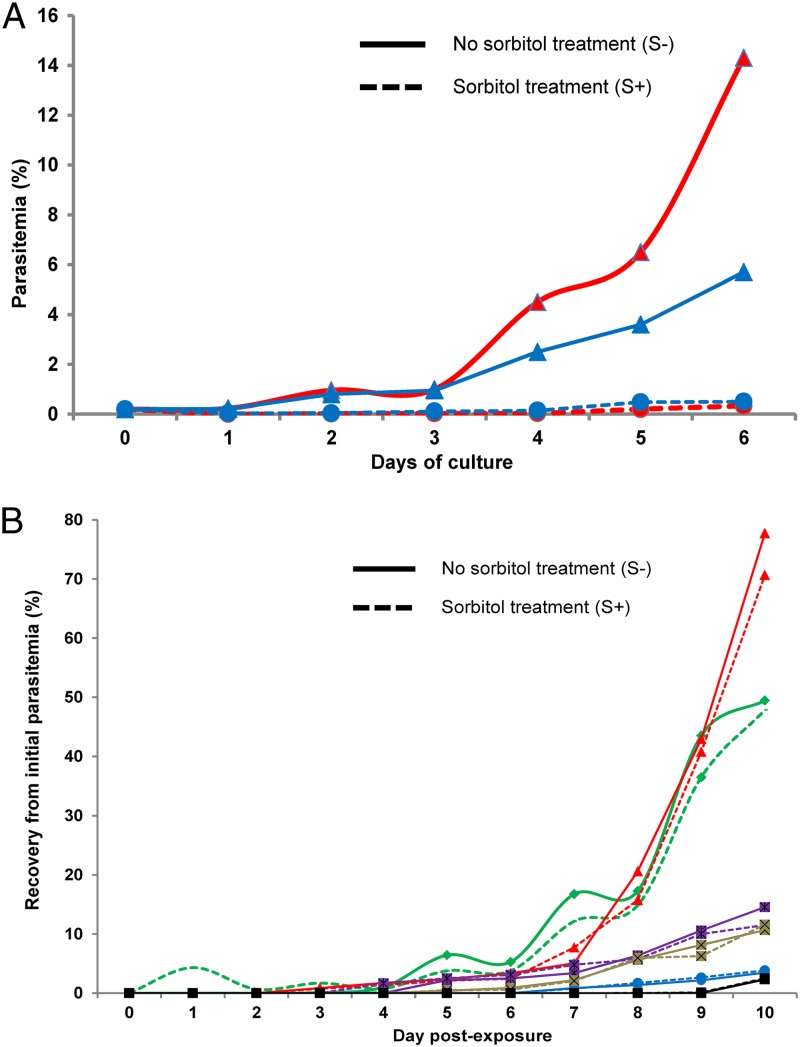Fig 5.
Recrudescence following a 24-h exposure to 700 nM DHA of ring stages with or without sorbitol treatment after drug exposure. (A) Parasitemia of control cultures (no drug exposure) of PL4971 (red) and RT4974 (blue). Cultures received a sorbitol treatment at H24 (S+) (dotted line) or were mock treated (S−) (solid line). Sorbitol treatment induced, as predicted, massive lysis of infected red cells and a dramatic drop of parasite counts (at D6, PL4971 = 14.3% in S− versus 0.2% in S+ and RT4974 = 5.6% in S− versus 0.3% in S+). (B) Recovery of the initial parasitemia of DHA-exposed PL4971 (red), PL5145 (green), PL4992 (purple), RT3592 (brown), RT4974 (blue), and RT5150 (black). Cultures received a sorbitol treatment immediately after a 24-h exposure to 700 nM DHA (S+) (dotted line) or were mock treated (S−) (solid line). In DHA-treated cultures, sorbitol treatment had no impact on the growth curve of cultures (at D10, PL4971 = 77.7% in S− versus 70.6% in S+, PL5145 = 47.8% in S− versus 49.5% in S+, PL4992 = 14.5% in S− versus 11.5% in S+, RT3592= 10.6% in S− versus 11.6% in S+, RT4974 = 3.5% in S− versus 3.9% in S+, and RT5150 = 2.5% in S− versus 2.3% in S+).

